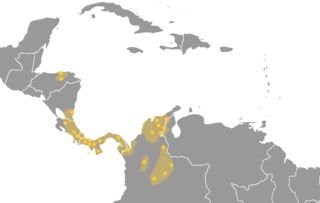
Anthropology is the scientific study of humanity, concerned with human behavior, human biology, cultures, societies, and linguistics, in both the present and past, including past human species. Social anthropology studies patterns of behavior, while cultural anthropology studies cultural meaning, including norms and values. A portmanteau term sociocultural anthropology is commonly used today. Linguistic anthropology studies how language influences social life. Biological or physical anthropology studies the biological development of humans.

Cultural anthropology is a branch of anthropology focused on the study of cultural variation among humans. It is in contrast to social anthropology, which perceives cultural variation as a subset of a posited anthropological constant. The portmanteau term sociocultural anthropology includes both cultural and social anthropology traditions.

Ethnography is a branch of anthropology and the systematic study of individual cultures. Ethnography explores cultural phenomena from the point of view of the subject of the study. Ethnography is also a type of social research that involves examining the behavior of the participants in a given social situation and understanding the group members' own interpretation of such behavior. Ethnography in simple terms is a type of qualitative research where a person puts themselves in a specific community or organization in attempt to learn about their cultures from a first person point-of-view.
Medical anthropology studies "human health and disease, health care systems, and biocultural adaptation". It views humans from multidimensional and ecological perspectives. It is one of the most highly developed areas of anthropology and applied anthropology, and is a subfield of social and cultural anthropology that examines the ways in which culture and society are organized around or influenced by issues of health, health care and related issues.
George Peter ("Pete") Murdock, also known as G. P. Murdock, was an American anthropologist who was professor at Yale University and University of Pittsburgh. He is remembered for his empirical approach to ethnological studies and his study of family and kinship structures across differing cultures. His 1967 Ethnographic Atlas dataset on more than 1,200 pre-industrial societies is influential and frequently used in social science research.
Cross-cultural studies, sometimes called holocultural studies or comparative studies, is a specialization in anthropology and sister sciences such as sociology, psychology, economics, political science that uses field data from many societies through comparative research to examine the scope of human behavior and test hypotheses about human behavior and culture.
Raoul Naroll was a Canadian-born American anthropologist who did much to promote the methodology of cross-cultural studies.

Visual anthropology is a subfield of social anthropology that is concerned, in part, with the study and production of ethnographic photography, film and, since the mid-1990s, new media. More recently it has been used by historians of science and visual culture. Although sometimes wrongly conflated with ethnographic film, visual anthropology encompasses much more, including the anthropological study of all visual representations such as dance and other kinds of performance, museums and archiving, all visual arts, and the production and reception of mass media. Histories and analyses of representations from many cultures are part of visual anthropology: research topics include sandpaintings, tattoos, sculptures and reliefs, cave paintings, scrimshaw, jewelry, hieroglyphics, paintings and photographs. Also within the province of the subfield are studies of human vision, properties of media, the relationship of visual form and function, and applied, collaborative uses of visual representations.

The Intermediate Area is an archaeological geographical area of the Americas that was defined in its clearest form by Gordon R. Willey in his 1971 book An Introduction to American Archaeology, Vol. 2: South America. It comprises the geographical region between Mesoamerica to the north and the Central Andes to the south, including portions of Honduras and Nicaragua and most of the territory of the republics of Costa Rica, Panama and Colombia. As an archaeological concept, the Intermediate Area has always been somewhat poorly defined.
The Standard Cross-Cultural Sample (SCCS) is a sample of 186 cultures used by scholars engaged in cross-cultural studies.
World Cultures is an electronic peer-reviewed academic journal of cross-cultural studies. It was founded in 1985 by Douglas R. White, editor in chief until 1990, followed by Greg Truex 1991, J. Patrick Gray (1992-2014), and Greg Truex (2015-16). William Divale was the publisher until 2008, when the journal moved from print and CD-ROM format to online format. It is hosted as an eScholarship journal that publishes cross-cultural research articles and computerized codebooks and datasets. These include the Standard Cross-Cultural Sample, Western North American Indians, an Atlas of Archaeology, the Ethnographic Atlas, and Lewis Binford's Constructing Frames of Reference: An Analytical Method for Archaeological Theory Building Using Ethnographic and Environmental Data Sets (2001) and numerous other topics. Numerous software programs for cross-cultural analysis have also been published.
The Department of Social Relations for Interdisciplinary Social Science Studies, more commonly known as the "Department of Social Relations", was an interdisciplinary collaboration among three of the social science departments at Harvard University beginning in 1946. Originally, the program was headquartered in Emerson Hall at Harvard before moving to William James Hall in 1965. While the name "Social Relations" is often associated with the program's long-time chair and guiding spirit, sociologist Talcott Parsons, many major figures of mid-20th-century social science also numbered among the program's faculty, including psychologists Gordon Allport, Jerome Bruner, Roger Brown, and Henry Murray (personality); anthropologists Clyde and Florence Kluckhohn, John and Beatrice Whiting, Evon Z. Vogt ; and sociologist Alex Inkeles. Other prominent scholars, such as Jerome Kagan and Ezra Vogel belonged to the department early in their careers before it split. Many of the department's graduate students also went on to be major figures in US social sciences during the latter part of the twentieth century; their work tends towards strong interdisciplinary and cross-disciplinary approaches.
John M. Roberts was an American anthropologist who developed the field of expressive culture in a series of studies on games in culture, and published over 50 articles on these subjects. His complete list of publications can be found in the biography by Goodenough (1995). His 1964 article marked the first anthropological view of distributed cognition through the social organization of a community, looking at how information moves through the people in the society.
Cliodynamics is a transdisciplinary area of research that integrates cultural evolution, economic history/cliometrics, macrosociology, the mathematical modeling of historical processes during the longue durée, and the construction and analysis of historical databases.

Cross-Cultural Research is a peer-reviewed academic journal that publishes papers in the field of Social Sciences. The journal's editor is Carol R. Ember. The journal has been in publication since 1966 and is currently published by SAGE Publications on behalf of the Society for Cross-Cultural Research.

Melvin Lawrence Ember was an American cultural anthropologist and cross-cultural researcher with wide-ranging interests who combined an active research career with writing for nonprofessionals.

Peter N. Peregrine is an American anthropologist, registered professional archaeologist, and academic. He is well known for his promotion of the use of science in anthropology, and for his popular textbook Anthropology. Peregrine did dissertation research on the evolution of the Mississippian culture of North America, and conducted fieldwork on Bronze Age cities in Syria. He is currently Professor of Anthropology and Museum Studies at Lawrence University and Research Associate of the Human Relations Area Files at Yale University. From 2012 to 2018 he was an External Professor at the Santa Fe Institute.
Computational social science is the academic sub-discipline concerned with computational approaches to the social sciences. This means that computers are used to model, simulate, and analyze social phenomena. Fields include computational economics, computational sociology, cliodynamics, culturomics, and the automated analysis of contents, in social and traditional media. It focuses on investigating social and behavioral relationships and interactions through social simulation, modeling, network analysis, and media analysis.
Carol R. Ember is an American cultural anthropologist, cross-cultural researcher and a writer of books on anthropology. She is now the President of the Human Relations Area Files at Yale University.









